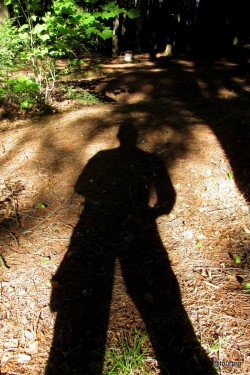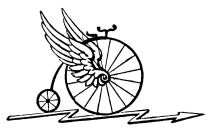 The New York State Department of Environmental Conservation (DEC) today issued guidance on preventing conflicts with coyotes and nuisance bear encounters. With the onset of warmer weather, New York’s black bear population will be on the move and coyotes are setting up denning areas for soon-to-arrive pups. Conflicts with people and pets may result as coyotes become territorial around den sites and increase the frequency and intensity of foraging to provide food for their young.
The New York State Department of Environmental Conservation (DEC) today issued guidance on preventing conflicts with coyotes and nuisance bear encounters. With the onset of warmer weather, New York’s black bear population will be on the move and coyotes are setting up denning areas for soon-to-arrive pups. Conflicts with people and pets may result as coyotes become territorial around den sites and increase the frequency and intensity of foraging to provide food for their young.
COYOTES
People and coyotes can usually coexist if the coyotes’ natural fear of people is maintained. Below are some steps you can take to reduce/prevent coyote problems from occurring:
- Do not feed coyotes.
- Do not allow pets to run free or to be outside unattended.
- Do not feed pets outside.
- Make any garbage inaccessible to coyotes and other animals.
- Fence or enclose compost piles so they are not accessible to coyotes.
- Eliminate availability of bird seed. Coyotes are attracted to the concentration of birds and rodents that come to feeders. If you feed birds, clean up waste seed and spillage.
- Fencing your yard may deter coyotes. The fence should be tight to the ground, preferably extending six inches below ground level.
- Teach children to appreciate coyotes from a distance.
- If you see a coyote, be aggressive in your behavior – make loud noises, wave your arms, throw sticks and stones to scare it away.
- Ask your neighbors to follow these same steps.
The Eastern coyote is a firmly established wildlife species in New York, and is an integral part of our ecosystems, from rural farmlands and forests to populated urban and suburban areas. In most cases, coyotes avoid people as much as possible. Coyotes provide many benefits to New Yorkers through observation, photography, hunting and trapping; their calling at night can provide a haunting but harmless reminder of wildlife in our midst. However, if coyotes learn to associate people with food (e.g., garbage, pet food), they may lose their natural fear of humans, and the potential for conflicts increases dramatically.
It is important to keep pets safe. Cats allowed to roam free are at risk from many different factors including domestic dogs and cars. To protect your cat, keep it indoors, or allow it outside only under supervision.
Coyotes view other canines such as domestic dogs as a threat to their young during the spring denning season. Both a dog and a coyote believe that one’s backyard is their territory. Coyotes avoid confrontations with most medium to large-sized dogs, but small breeds may be at risk in some situations. For this reason, do not allow dogs to roam unattended.
If coyotes are seen repeatedly during the daytime in a populated area in close proximity to residences, please report this to the local DEC office, as this may indicate that some individual coyotes may have lost their fear of people and could pose a threat to unattended pets or small children.
For additional information, visit DEC’s website: Coyote Conflicts
BLACK BEARS
Black bears will take advantage of almost any readily available food source, including bird feeders and garbage. To prevent encounters between bears and humans, people should never intentionally feed bears and should take every precaution to discourage bears from seeking out food sources in neighborhoods and other residential areas.
Typically, black bears are timid and will avoid all contact with humans. However, bears will become a nuisance and can cause significant damage if they believe they can obtain an easy meal from bird feeders, garbage cans, dumpsters, barbeque grills, tents, vehicles, out-buildings or houses.
It is not only illegal to intentionally feed bears, it is also illegal to inadvertently feed them. Specifically, after written notice from DEC, the incidental or indirect feeding of bears through food attractants such as garbage, pet food or bird seed is illegal. DEC has the authority to require the removal of these and other food attractants when bears become problematic.
 It is in the best interest of both bears and people for bears to get their food solely from wild sources. Once a bear learns to associate certain structures with food, it can become a serious nuisance to people and a threat to itself. Bears that lose their natural fear of humans are much more likely to be illegally shot, hit by an automobile or destroyed under a DEC nuisance permit. Some studies suggest that when a bear is fed, either directly or indirectly, its life expectancy is cut by as much as 50 percent.
It is in the best interest of both bears and people for bears to get their food solely from wild sources. Once a bear learns to associate certain structures with food, it can become a serious nuisance to people and a threat to itself. Bears that lose their natural fear of humans are much more likely to be illegally shot, hit by an automobile or destroyed under a DEC nuisance permit. Some studies suggest that when a bear is fed, either directly or indirectly, its life expectancy is cut by as much as 50 percent.
Once a bear becomes a problem, DEC is often asked to relocate the bear. Contrary to popular belief, bear relocations are rarely effective at solving the problem. Bears are extremely mobile and have excellent homing abilities. Relocated bears often return to their original capture site or may continue their bad habits at a new location. If the circumstances that led to the original problem are not corrected, other bears will quickly be attracted to the site and the bear/human conflicts will persist.
In addition to being ineffective, bear relocations are extremely time consuming and often dangerous. The heavy door on the bear traps, although not dangerous to bears, presents a potential danger to curious humans and pets. The simplest way to avoid a nuisance encounter is to remove all food sources. Removing the food source will remove the bear.
Because virtually all nuisance bear problems are the result of hungry bears being attracted to human food, pet food, bird food or garbage, these problems can be minimized by taking these simple precautions:
- Never feed bears. It is illegal.
- If you believe that bears are being fed, please report it to DEC.
- Stop feeding birds as soon as the snow melts. Birds do not need supplemental food in the summer, when natural foods are most abundant.
- Clean up all seed fragments and shells left over from winter feeding as the smell will attract bears.
- Dispose of garbage as frequently as possible and store in a secure building prior to disposal.
- If garbage is picked up at the curb, put the garbage out just before the scheduled pickup or place it in a roadside bear-resistant container. Do not put garbage out the night before pick-up at the curb.
- Clean garbage cans frequently with ammonia.
- Do not burn garbage, it’s illegal and it attracts bears.
- Do not add meat scraps, bones or melon rinds to your compost pile.
- Clean up barbecue grills before night fall, and after they cool down store them inside.
- Feed pets indoors and store pet food indoors. If pets must be fed outdoors, take in all uneaten food and dishes before dark.
- Turn off kitchen exhaust fans that vent to the outside whenever possible.
- When camping, keep food out of sight and secured in the trunk of a hard topped, locked vehicle if one is available. If a vehicle is not available, hang food and garbage from a tree at least eight feet off the ground. Keep picnic tables, utensils, fireplaces and the surrounding areas clean.
To learn more about black bears, look for DEC’s DVD Living with New York Black Bears at your public library or visit: Black Bear
Everyone is asked to respect bears as wild animals – from a distance. For more information about bears in your area, contact the nearest regional DEC office. Visit: DEC Regional Office Directory
 The 11th annual Great Adirondack Birding Celebration is scheduled for 31 May – 2 June 2013, at the Paul Smith’s College Visitor Interpretive Center (VIC) in Paul Smiths, New York. The event will feature field trips to boreal birding hot spots, informative lectures, and workshops. Field trips include: an all-day Birding Across the Adirondacks trip on Friday, plus a selection of half-day field trips on Saturday and Sunday (Birding by Ear at the VIC, Beginner Birder Workshop at the VIC, Bloomingdale Bog, Intervale Lowlands, Little Clear Pond for loons, Madawaska Flow, Spring Pond Bog, and Whiteface Mountain).
The 11th annual Great Adirondack Birding Celebration is scheduled for 31 May – 2 June 2013, at the Paul Smith’s College Visitor Interpretive Center (VIC) in Paul Smiths, New York. The event will feature field trips to boreal birding hot spots, informative lectures, and workshops. Field trips include: an all-day Birding Across the Adirondacks trip on Friday, plus a selection of half-day field trips on Saturday and Sunday (Birding by Ear at the VIC, Beginner Birder Workshop at the VIC, Bloomingdale Bog, Intervale Lowlands, Little Clear Pond for loons, Madawaska Flow, Spring Pond Bog, and Whiteface Mountain).

 The
The 



